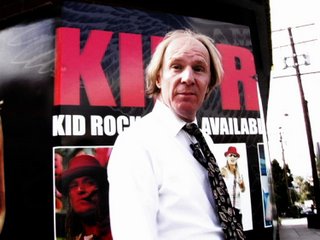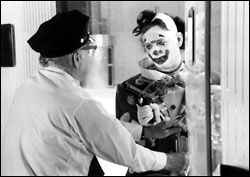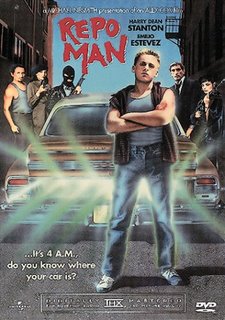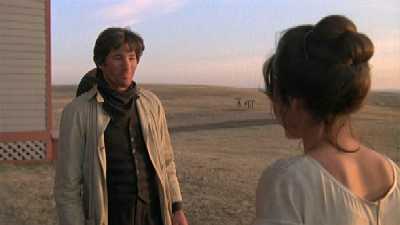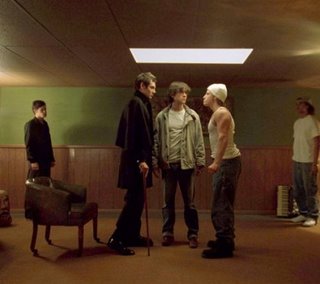
Well, another Harry Potter movie made it to DVD. Like everyone else in the free world, I did my civic duty and watched it, and yes, Maximus, I was entertained. This latest installment features Harry entering a tournament of wizards, and the kids finally start dating. Of course, Lord Voldemort makes an appearance.
My list of complaints about the Harry Potter films is long, so let’s get right to it. First, Harry is supposed to be this powerful wizard, but we hardly ever see him cast a spell that Hermione couldn’t have cast just as well. In the first Star Wars, Luke seems like a snotty, young hick, but when he suddenly blocks 3 laser blasts with that visor over his eyes, we start to realize that he might have something special. After 4 movies, I still haven’t gotten that feeling about Harry. Instead of someone who works magic, he just seems like a good-hearted bloke around whom magical things happen.
Second, why are all the spells in Latin? Rome was one of the world’s most logical, scientific, non-superstitious societies. The Romans were one of the least likely people to have been into magic, so why would all the spells be in their language? I would think it would be something like Sumerian, Hebrew, or one of the Celtic tongues. I realize this is a very nitpicky point to make, but for me it is just a reminder that while these films (and books) appeal to many adults, they are still kid’s fare.
With that in mind, I suppose I will shut up about the negative points. If adults are going to indulge in children’s tales, we shouldn’t complain that the story is immature. “Harry Potter and the Goblet of Fire,” the fourth Potter film, is at once the most engrossing of the stories so far, and the clunkiest. Throughout, the film benefits from acceptable dialogue, superb action, and excellent acting from stars Daniel Radcliffe (Harry), Emma Watson (Hermione), and Rupert Grint (Ron), as well as a really creepy Ralph Fiennes as Voldemort. On the other hand, this two and a half hour movie probably would have been even better at three hours. There are several points where it seems key, or at least potentially entertaining, scenes were cut. These lead to incongruous scene changes, which makes the story lurch forward a bit.
The Harry Potter films are much like fast food, perfectly suited to younger tastes. As an adult, I can still totally devour a Macdonald’s burger, but at the end I am left feeling vaguely unsatisfied, and so it is with these movies. I guess if I really cared to fill in all those details, I would read the Harry Potter books, which would probably explain away a lot of my other complaints about the series. For now I am content to just enjoy the movies as the popcorn fare they are.
3 stars out of 5
